Duc Hoang
Rhodes College
Building Machine Learning Challenges for Anomaly Detection in Science
Mar 03, 2025Abstract:Scientific discoveries are often made by finding a pattern or object that was not predicted by the known rules of science. Oftentimes, these anomalous events or objects that do not conform to the norms are an indication that the rules of science governing the data are incomplete, and something new needs to be present to explain these unexpected outliers. The challenge of finding anomalies can be confounding since it requires codifying a complete knowledge of the known scientific behaviors and then projecting these known behaviors on the data to look for deviations. When utilizing machine learning, this presents a particular challenge since we require that the model not only understands scientific data perfectly but also recognizes when the data is inconsistent and out of the scope of its trained behavior. In this paper, we present three datasets aimed at developing machine learning-based anomaly detection for disparate scientific domains covering astrophysics, genomics, and polar science. We present the different datasets along with a scheme to make machine learning challenges around the three datasets findable, accessible, interoperable, and reusable (FAIR). Furthermore, we present an approach that generalizes to future machine learning challenges, enabling the possibility of large, more compute-intensive challenges that can ultimately lead to scientific discovery.
SPD: Sync-Point Drop for efficient tensor parallelism of Large Language Models
Feb 28, 2025Abstract:With the rapid expansion in the scale of large language models (LLMs), enabling efficient distributed inference across multiple computing units has become increasingly critical. However, communication overheads from popular distributed inference techniques such as Tensor Parallelism pose a significant challenge to achieve scalability and low latency. Therefore, we introduce a novel optimization technique, Sync-Point Drop (SPD), to reduce communication overheads in tensor parallelism by selectively dropping synchronization on attention outputs. In detail, we first propose a block design that allows execution to proceed without communication through SPD. Second, we apply different SPD strategies to attention blocks based on their sensitivity to the model accuracy. The proposed methods effectively alleviate communication bottlenecks while minimizing accuracy degradation during LLM inference, offering a scalable solution for diverse distributed environments: SPD offered about 20% overall inference latency reduction with < 1% accuracy regression for LLaMA2-70B inference over 8 GPUs.
Zero-Shot Neural Architecture Search: Challenges, Solutions, and Opportunities
Jul 05, 2023Abstract:Recently, zero-shot (or training-free) Neural Architecture Search (NAS) approaches have been proposed to liberate the NAS from training requirements. The key idea behind zero-shot NAS approaches is to design proxies that predict the accuracies of the given networks without training network parameters. The proxies proposed so far are usually inspired by recent progress in theoretical deep learning and have shown great potential on several NAS benchmark datasets. This paper aims to comprehensively review and compare the state-of-the-art (SOTA) zero-shot NAS approaches, with an emphasis on their hardware awareness. To this end, we first review the mainstream zero-shot proxies and discuss their theoretical underpinnings. We then compare these zero-shot proxies through large-scale experiments and demonstrate their effectiveness in both hardware-aware and hardware-oblivious NAS scenarios. Finally, we point out several promising ideas to design better proxies. Our source code and the related paper list are available on https://github.com/SLDGroup/survey-zero-shot-nas.
Applications and Techniques for Fast Machine Learning in Science
Oct 25, 2021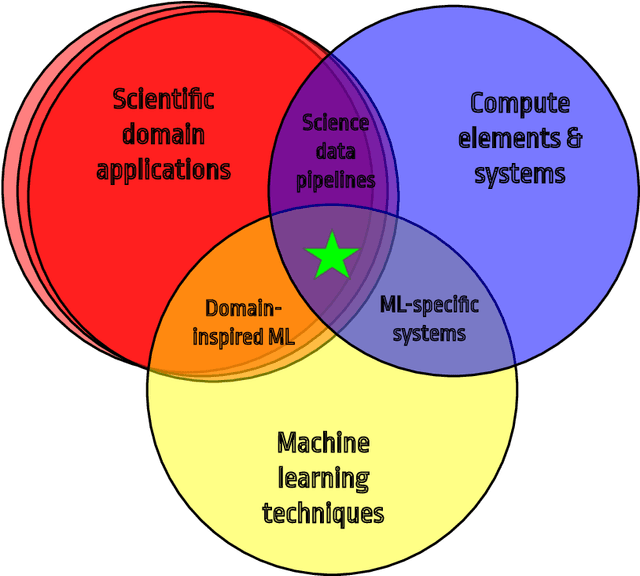
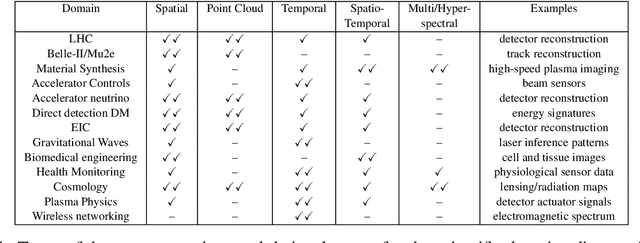
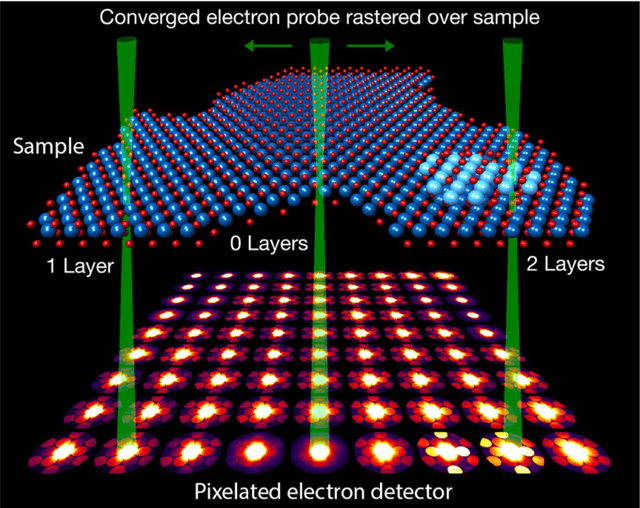

Abstract:In this community review report, we discuss applications and techniques for fast machine learning (ML) in science -- the concept of integrating power ML methods into the real-time experimental data processing loop to accelerate scientific discovery. The material for the report builds on two workshops held by the Fast ML for Science community and covers three main areas: applications for fast ML across a number of scientific domains; techniques for training and implementing performant and resource-efficient ML algorithms; and computing architectures, platforms, and technologies for deploying these algorithms. We also present overlapping challenges across the multiple scientific domains where common solutions can be found. This community report is intended to give plenty of examples and inspiration for scientific discovery through integrated and accelerated ML solutions. This is followed by a high-level overview and organization of technical advances, including an abundance of pointers to source material, which can enable these breakthroughs.
hls4ml: An Open-Source Codesign Workflow to Empower Scientific Low-Power Machine Learning Devices
Mar 23, 2021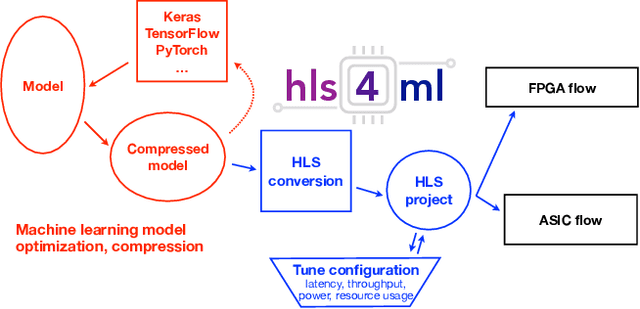
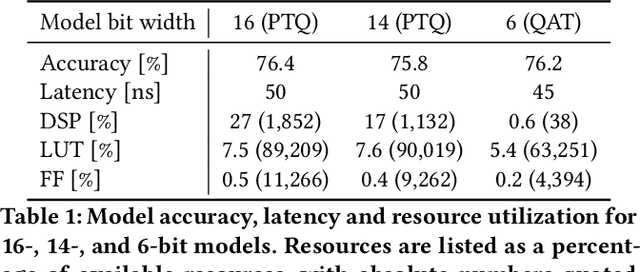
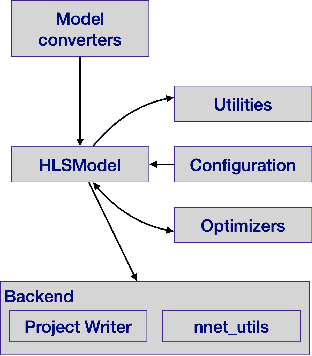
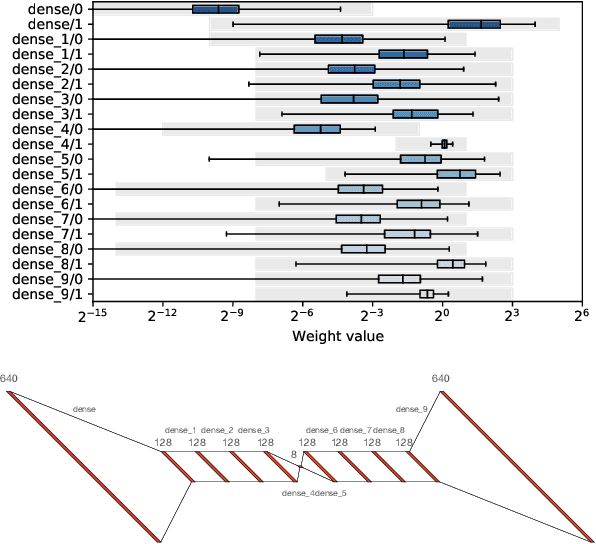
Abstract:Accessible machine learning algorithms, software, and diagnostic tools for energy-efficient devices and systems are extremely valuable across a broad range of application domains. In scientific domains, real-time near-sensor processing can drastically improve experimental design and accelerate scientific discoveries. To support domain scientists, we have developed hls4ml, an open-source software-hardware codesign workflow to interpret and translate machine learning algorithms for implementation with both FPGA and ASIC technologies. We expand on previous hls4ml work by extending capabilities and techniques towards low-power implementations and increased usability: new Python APIs, quantization-aware pruning, end-to-end FPGA workflows, long pipeline kernels for low power, and new device backends include an ASIC workflow. Taken together, these and continued efforts in hls4ml will arm a new generation of domain scientists with accessible, efficient, and powerful tools for machine-learning-accelerated discovery.
Fast convolutional neural networks on FPGAs with hls4ml
Jan 13, 2021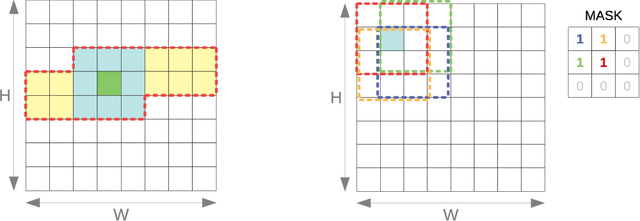

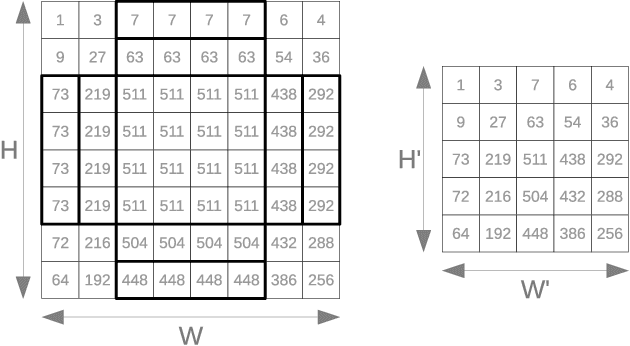

Abstract:We introduce an automated tool for deploying ultra low-latency, low-power deep neural networks with large convolutional layers on FPGAs. By extending the hls4ml library, we demonstrate how to achieve inference latency of $5\,\mu$s using convolutional architectures, while preserving state-of-the-art model performance. Considering benchmark models trained on the Street View House Numbers Dataset, we demonstrate various methods for model compression in order to fit the computational constraints of a typical FPGA device. In particular, we discuss pruning and quantization-aware training, and demonstrate how resource utilization can be reduced by over 90% while maintaining the original model accuracy.
MM-Hand: 3D-Aware Multi-Modal Guided Hand Generative Network for 3D Hand Pose Synthesis
Oct 02, 2020


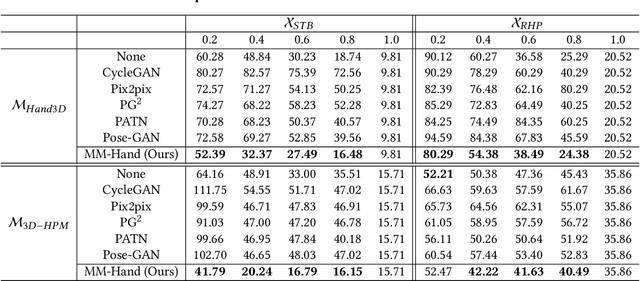
Abstract:Estimating the 3D hand pose from a monocular RGB image is important but challenging. A solution is training on large-scale RGB hand images with accurate 3D hand keypoint annotations. However, it is too expensive in practice. Instead, we have developed a learning-based approach to synthesize realistic, diverse, and 3D pose-preserving hand images under the guidance of 3D pose information. We propose a 3D-aware multi-modal guided hand generative network (MM-Hand), together with a novel geometry-based curriculum learning strategy. Our extensive experimental results demonstrate that the 3D-annotated images generated by MM-Hand qualitatively and quantitatively outperform existing options. Moreover, the augmented data can consistently improve the quantitative performance of the state-of-the-art 3D hand pose estimators on two benchmark datasets. The code will be available at https://github.com/ScottHoang/mm-hand.
Compressing deep neural networks on FPGAs to binary and ternary precision with HLS4ML
Mar 11, 2020
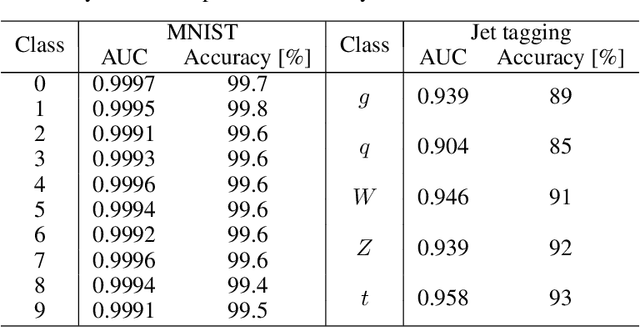
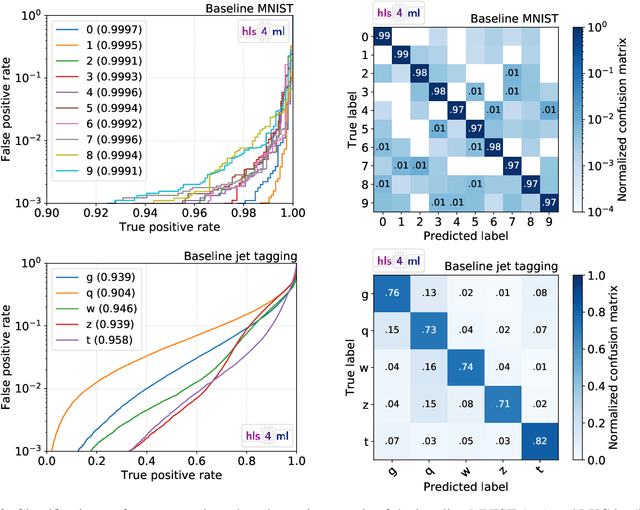

Abstract:We present the implementation of binary and ternary neural networks in the hls4ml library, designed to automatically convert deep neural network models to digital circuits with FPGA firmware. Starting from benchmark models trained with floating point precision, we investigate different strategies to reduce the network's resource consumption by reducing the numerical precision of the network parameters to binary or ternary. We discuss the trade-off between model accuracy and resource consumption. In addition, we show how to balance between latency and accuracy by retaining full precision on a selected subset of network components. As an example, we consider two multiclass classification tasks: handwritten digit recognition with the MNIST data set and jet identification with simulated proton-proton collisions at the CERN Large Hadron Collider. The binary and ternary implementation has similar performance to the higher precision implementation while using drastically fewer FPGA resources.
Fast inference of Boosted Decision Trees in FPGAs for particle physics
Feb 19, 2020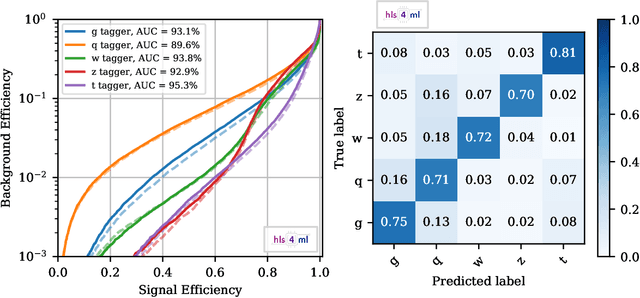

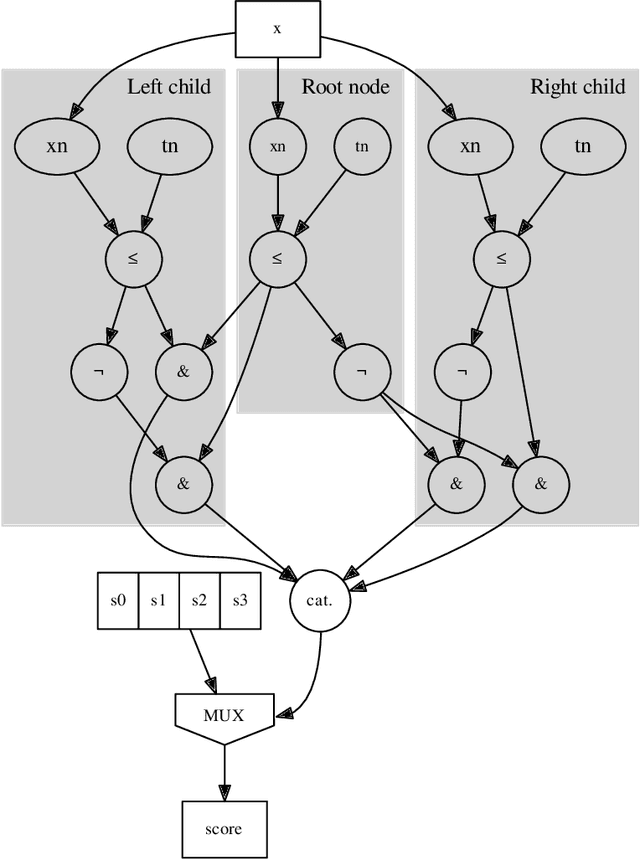
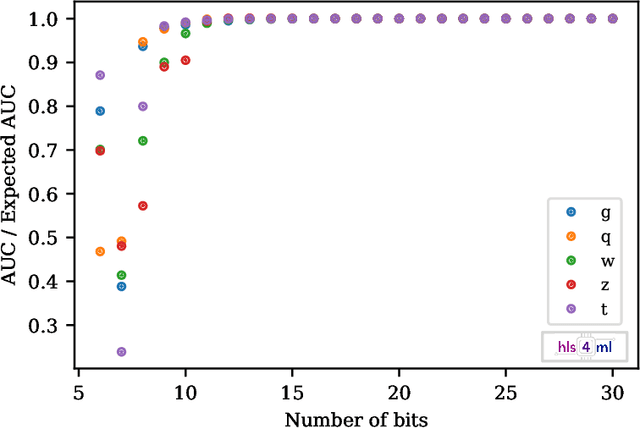
Abstract:We describe the implementation of Boosted Decision Trees in the hls4ml library, which allows the translation of a trained model into FPGA firmware through an automated conversion process. Thanks to its fully on-chip implementation, hls4ml performs inference of Boosted Decision Tree models with extremely low latency. With a typical latency less than 100 ns, this solution is suitable for FPGA-based real-time processing, such as in the Level-1 Trigger system of a collider experiment. These developments open up prospects for physicists to deploy BDTs in FPGAs for identifying the origin of jets, better reconstructing the energies of muons, and enabling better selection of rare signal processes.
Inferring Convolutional Neural Networks' accuracies from their architectural characterizations
Jan 10, 2020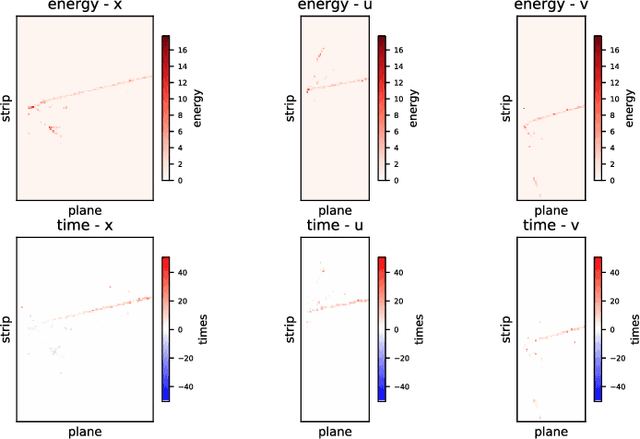
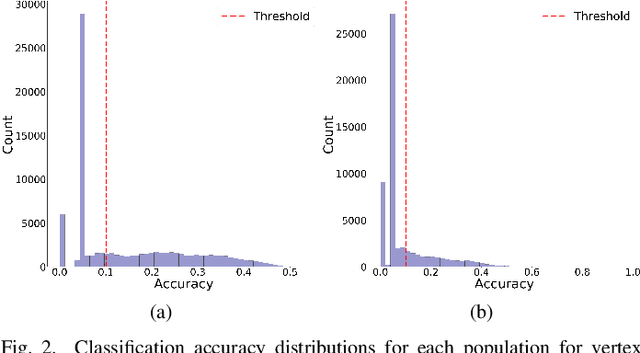
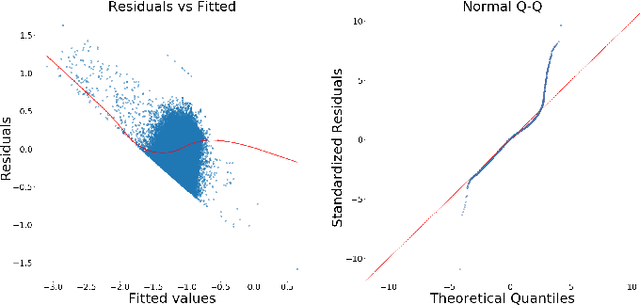
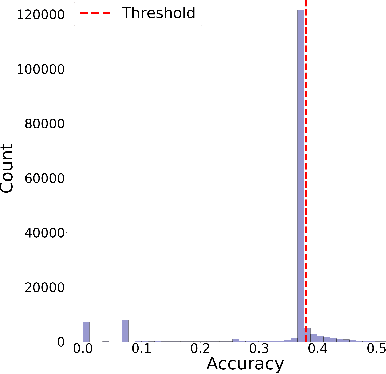
Abstract:Convolutional Neural Networks (CNNs) have shown strong promise for analyzing scientific data from many domains including particle imaging detectors. However, the challenge of choosing the appropriate network architecture (depth, kernel shapes, activation functions, etc.) for specific applications and different data sets is still poorly understood. In this paper, we study the relationships between a CNN's architecture and its performance by proposing a systematic language that is useful for comparison between different CNN's architectures before training time. We characterize CNN's architecture by different attributes, and demonstrate that the attributes can be predictive of the networks' performance in two specific computer vision-based physics problems -- event vertex finding and hadron multiplicity classification in the MINERvA experiment at Fermi National Accelerator Laboratory. In doing so, we extract several architectural attributes from optimized networks' architecture for the physics problems, which are outputs of a model selection algorithm called Multi-node Evolutionary Neural Networks for Deep Learning (MENNDL). We use machine learning models to predict whether a network can perform better than a certain threshold accuracy before training. The models perform 16-20% better than random guessing. Additionally, we found an coefficient of determination of 0.966 for an Ordinary Least Squares model in a regression on accuracy over a large population of networks.
 Add to Chrome
Add to Chrome Add to Firefox
Add to Firefox Add to Edge
Add to Edge